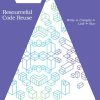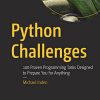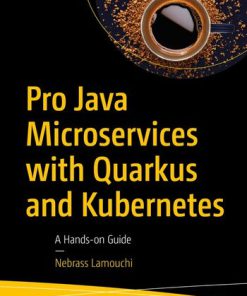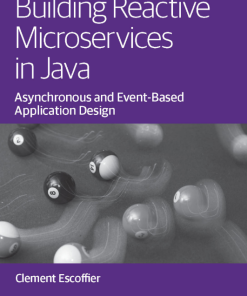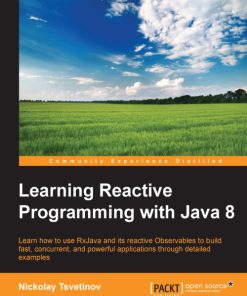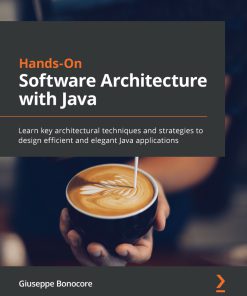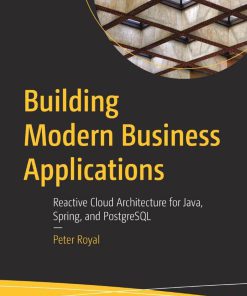Reactive Systems in Java Resilient Event Driven Architecture with Quarkus 1st Edition by Clement Escoffier, Ken Finnigan ISBN 9781492091721 1492091723
$50.00 Original price was: $50.00.$25.00Current price is: $25.00.
Reactive Systems in Java Resilient Event Driven Architecture with Quarkus 1st Edition by Clement Escoffier, Ken Finnigan – Ebook PDF Instant Download/Delivery: 9781492091721 ,1492091723
Full download Reactive Systems in Java Resilient Event Driven Architecture with Quarkus 1st Edition after payment

Product details:
ISBN 10: 1492091723
ISBN 13: 9781492091721
Author: Clement Escoffier, Ken Finnigan
Reactive Systems in Java Resilient Event Driven Architecture with Quarkus 1st Edition Table of contents:
I. Reactive and Quarkus Introduction
1. Reactive in a Nutshell
What Do We Mean by Reactive?
Reactive Software Is Not New
The Reactive Landscape
Why Are Reactive Architectures So Well-Suited for Cloud Native Applications?
Reactive Is Not a Silver Bullet
2. Introduction to Quarkus
Java on the Cloud
Thorntail Example
Quarkus Example
The Quarkus Way
Create Your First Quarkus Application
Kubernetes with Quarkus in 10 Minutes
Going Native
Summary
II. Reactive and Event-Driven Applications
3. The Dark Side of Distributed Systems
What’s a Distributed System?
The New Kids on the Block: Cloud Native and Kubernetes Native Applications
The Dark Side of Distributed Systems
Fallacies of Distributed Computing in a Kubernetes World
A Question of Timing: The Synchronous Communication Drawback
Summary
4. Design Principles of Reactive Systems
Reactive Systems 101
Commands and Events
Commands
Events
Messages
Commands Versus Events: An Example
Destinations and Space Decoupling
Time Decoupling
The Role of Nonblocking Input/Output
Blocking Network I/O, Threads, and Concurrency
How Does Nonblocking I/O Work?
Reactor Pattern and Event Loop
Anatomy of Reactive Applications
Summary
5. Reactive Programming: Taming the Asynchronicity
Asynchronous Code and Patterns
Using Futures
Project Loom: Virtual Threads and Carrier Threads
Reactive Programming
Streams
Operators
Reactive Programming Libraries
Reactive Streams and the Need for Flow Control
Buffering Items
Dropping Items
What Is Backpressure?
Introducing Reactive Streams
Be Warned: It’s a Trap!
Backpressure in Distributed Systems
Summary
III. Building Reactive Applications and Systems with Quarkus
6. Quarkus: Reactive Engine
The Imperative Model
The Reactive Model
Unification of Reactive and Imperative
A Reactive Engine
A Reactive Programming Model
Event-Driven Architecture with Quarkus
Summary
7. Mutiny: An Event-Driven Reactive Programming API
Why Another Reactive Programming Library?
What Makes Mutiny Unique?
Mutiny Usage in Quarkus
Uni and Multi
Mutiny and Flow Control
Observing Events
Transforming Events
Chaining Asynchronous Actions
Recovering from Failure
Combining and Joining Items
Selecting Items
Collecting Items
Summary
8. HTTP with Reactive in Mind
The Journey of an HTTP Request
Say Hello to RESTEasy Reactive!
What’s the Benefit?
Asynchronous Endpoints Returning Uni
Dealing with Failure and Customizing the Response
Streaming Data
Raw Streaming
Streaming JSON Array
Using Server-Sent-Events
Reactive Score
Summary
9. Accessing Data Reactively
The Problem with Data Access
Nonblocking Interactions with Relational Databases
Using a Reactive ORM: Hibernate Reactive
What About NoSQL?
Interacting with Redis
Data-Related Events and Change Data Capture
Using Debezium to Capture Change
Summary
IV. Connecting the Dots
10. Reactive Messaging: The Connective Tissue
From Reactive Applications to Reactive Systems
Channels and Messages
Producing Messages
Consuming Messages
Processing Messages
Acknowledgments
Connectors
Building Message-Based Applications
Message and Acknowledgment
Failures and Negative Acknowledgment
Stream Manipulation
Blocking Processing
Retrying Processing
Putting Everything Together
Summary
11. The Event Bus: The Backbone
Kafka or AMQP: Picking the Right Tool
Building Reactive Systems with Kafka
Apache Kafka
Point-to-Point Communication
Publish/Subscribe
Elasticity Patterns
Dealing with Failures
Backpressure and Performance Considerations
Kafka on Kubernetes
Building Reactive Systems with AMQP
AMQP 1.0
Point-to-Point Communication
Publish/Subscribe
Elasticity Patterns
Acknowledgment and Redelivery
Credit-Flow Backpressure Protocol
AMQP on Kubernetes
Summary
12. Reactive REST Client: Connecting with HTTP Endpoints
Interacting with an HTTP Endpoint
The REST Client Reactive
Mapping HTTP APIs to Java Interfaces
Invoking the Service
Blocking and Nonblocking
Handling Failures
Fallback
Retries
Time-out
Bulkheads and Circuit Breaker
Building API Gateways with the RESTEasy Reactive Client
Using the REST Client in Messaging Applications
Summary
13. Observing Reactive and Event-Driven Architectures
Why Is Observability Important?
Health with Messaging
Metrics with Messaging
Distributed Tracing with Messaging
Summary
Conclusion
A Brief Summary
Is That All?
The Future of Reactive Systems
The End of the Beginning
Index
People also search for Reactive Systems in Java Resilient Event Driven Architecture with Quarkus 1st Edition:
non reactive resilience
reactive resilient
quarkus reactive uni
understanding reactive programming
reactive-technologies
Tags: Clement Escoffier, Ken Finnigan, Reactive Systems, Java Resilient, Event Driven, Quarkus
You may also like…
Computers - Networking
Pro Java Microservices with Quarkus and Kubernetes: A Hands-on Guide 1st Edition Nebrass Lamouchi
Computers - Programming
Building Reactive Microservices in Java 1st Edition Clement Escoffier
Computers - Web Development
Computers - Applications & Software
Computers - Networking
Computers - Programming
Building Modern Business Applications 1st Edition by Peter Royal ISBN 9781484289921 1484289927
Computers - Web Development

